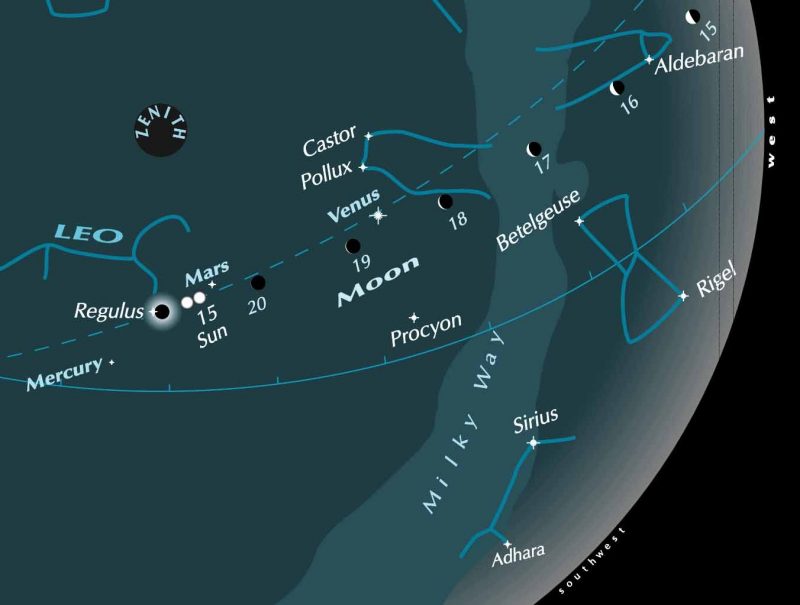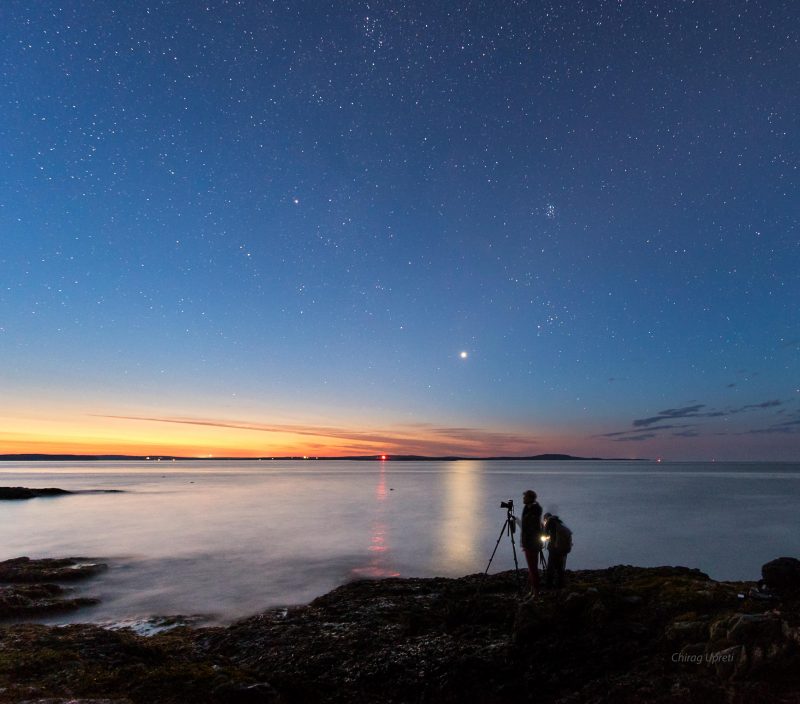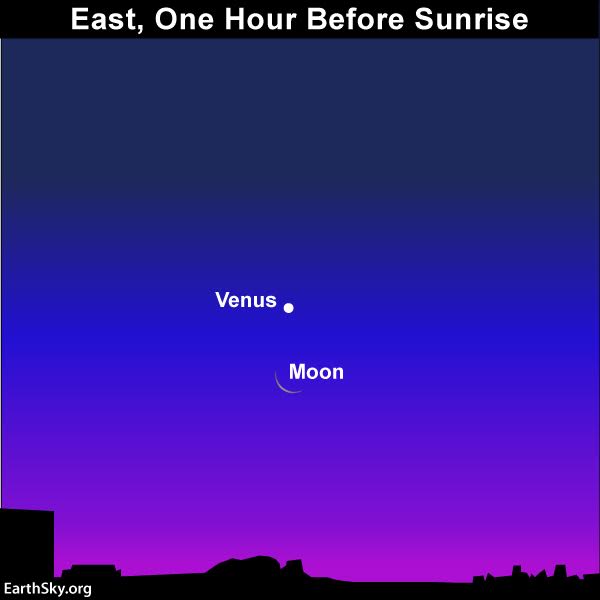Tomorrow – August 18, 2017 – and the following morning, watch for the waning crescent moon and dazzling planet Venus in the east in the hours before sunrise. Then remember Venus, especially if you plan to go to the path of totality for the August 21, 2017 total solar eclipse. The moon is heading sunward now, preparing to blot the sun from view. As the sky darkens on eclipse day, Venus will pop into view near the sun.
For now, enjoy the moon and Venus, the brightest and second-brightest celestial bodies of nighttime, respectively. They’re so bright that you can see them shortly before the sun comes up. In fact, some people might even see the brilliant twosome after sunrise.
The moon, of course, moves continually to the east in front of the stars, but people have been keeping an especially close eye on this particular waning moon, as it edges closer and closer to the sun on the sky’s dome.

On the mornings of August 18 and 19, you’ll find the moon and Venus in front of the constellation Gemini the Twins. However, you might have to get up before dawn breaks – say, about 90 minutes before sunup – to see Gemini’s two brightest stars. These stars are called Castor and Pollux.
The moon goes eastward in front of the constellations of the zodiac at an average rate of about 13o per day. For reference, the moon’s angular diameter approximates ½-degree and your fist at an arm length spans about 10o of sky.
The moon will pass out of the constellation Gemini and into the constellation Cancer after a few more days.
By the time that the moon turns new on August 21, the moon will be in front of the constellation Leo the Lion and very close to Leo’s brightest star, Regulus. If you reside at just the right spot in the United States, you can watch the new moon totally block out the sun’s disk for a few minutes on August 21, 2017. You might even see Regulus coming out as the totally eclipsed sun darkens the daytime sky.
Meanwhile, Venus is going eastward in front of the constellations of the zodiac, too, but at a slower pace than the moon. Venus will meet up with Regulus in the eastern sky before dawn about a month from now. Look for Venus to pass ½ degree (one moon-diameter) to north of Regulus, Virgo’s sole 1st-magnitude star, around September 19, 2017.

Bottom line: Get up before dawn in the next two mornings – August 18 and 19, 2017 – to see the moon and Venus close together in the east before sunup. The constellation Gemini’s two brightest stars, Castor and Pollux, are nearby.
.












